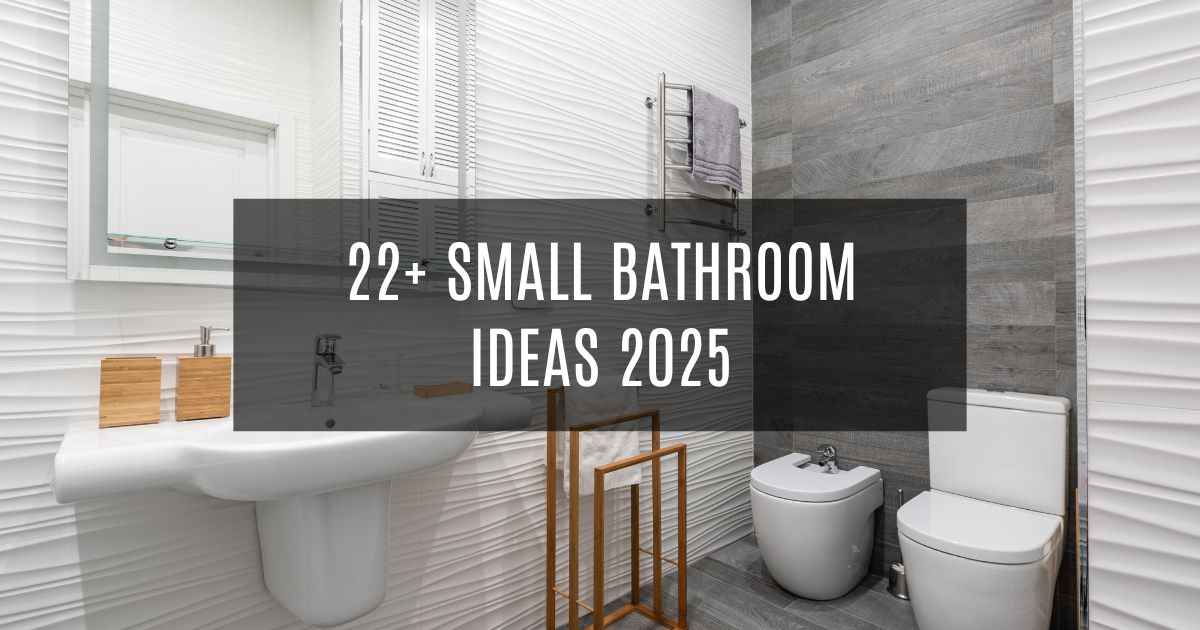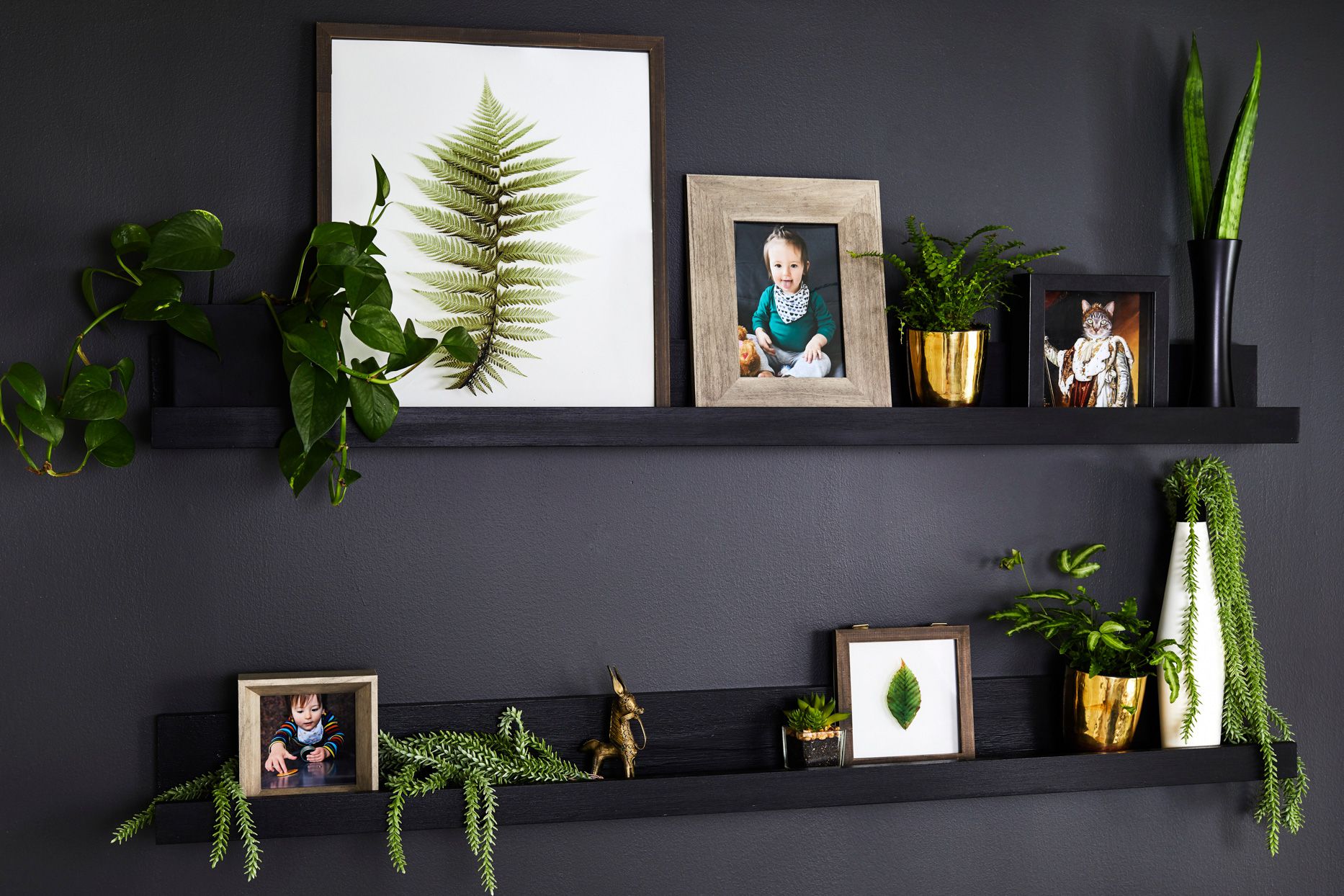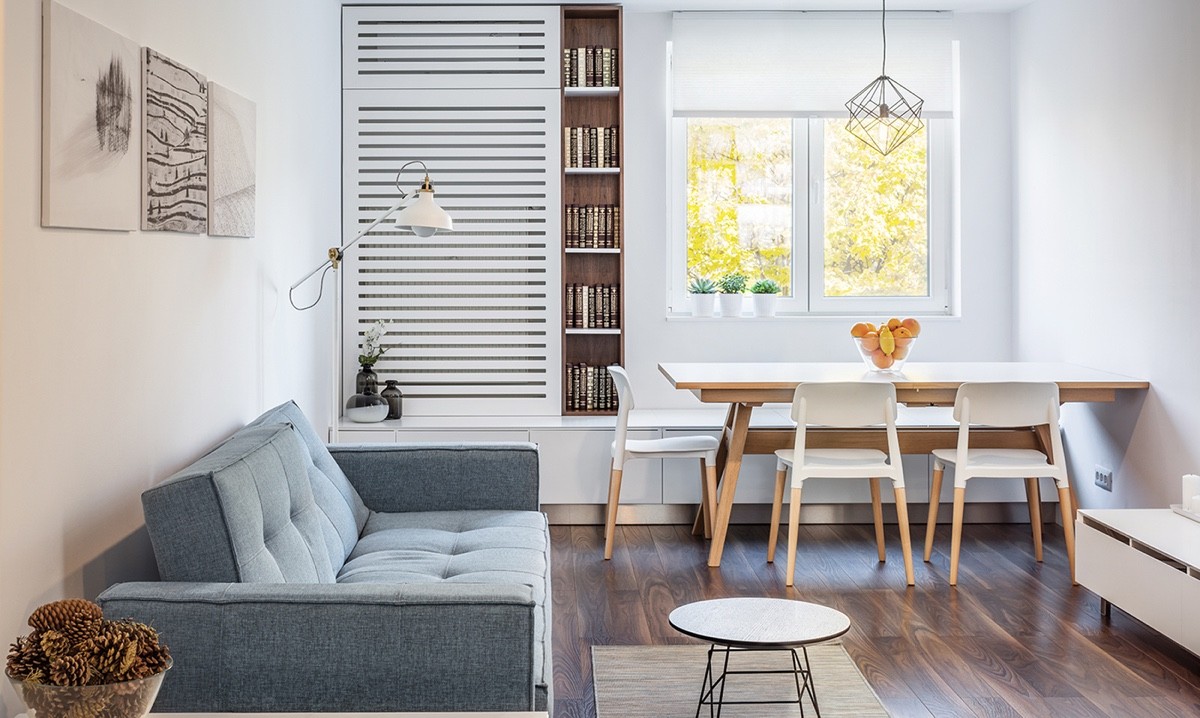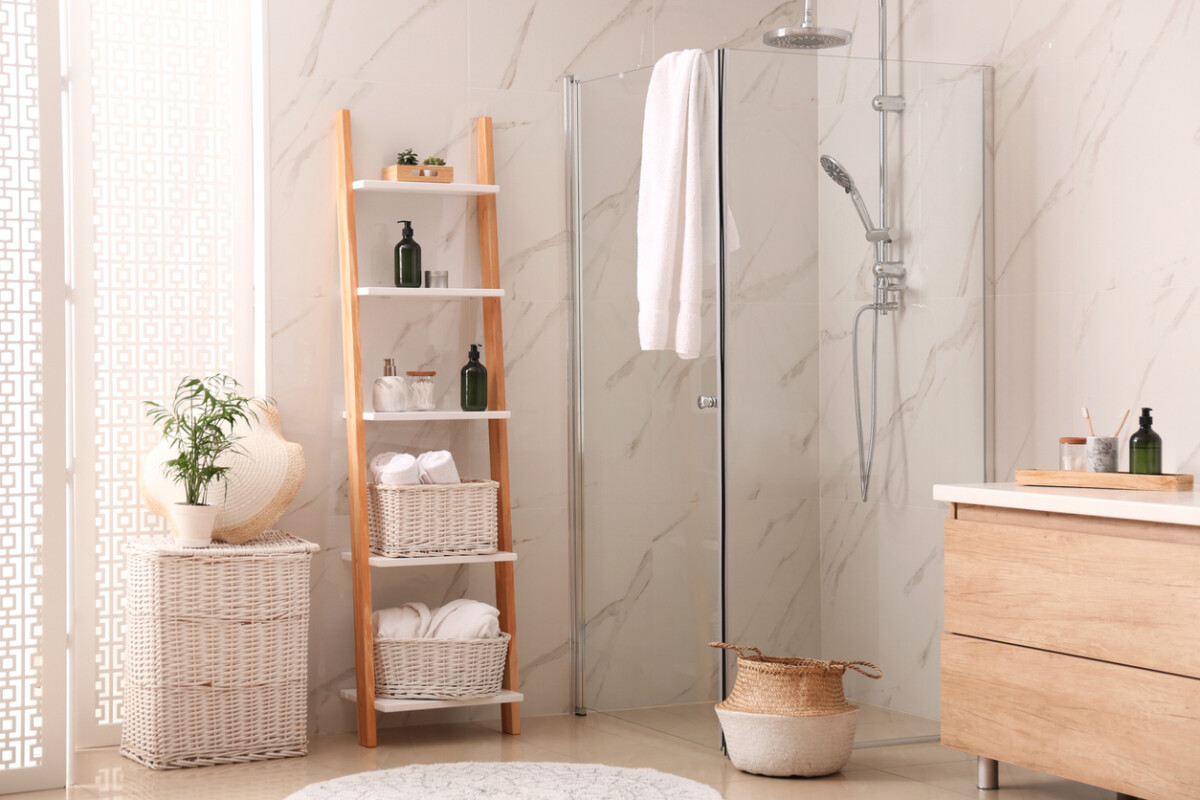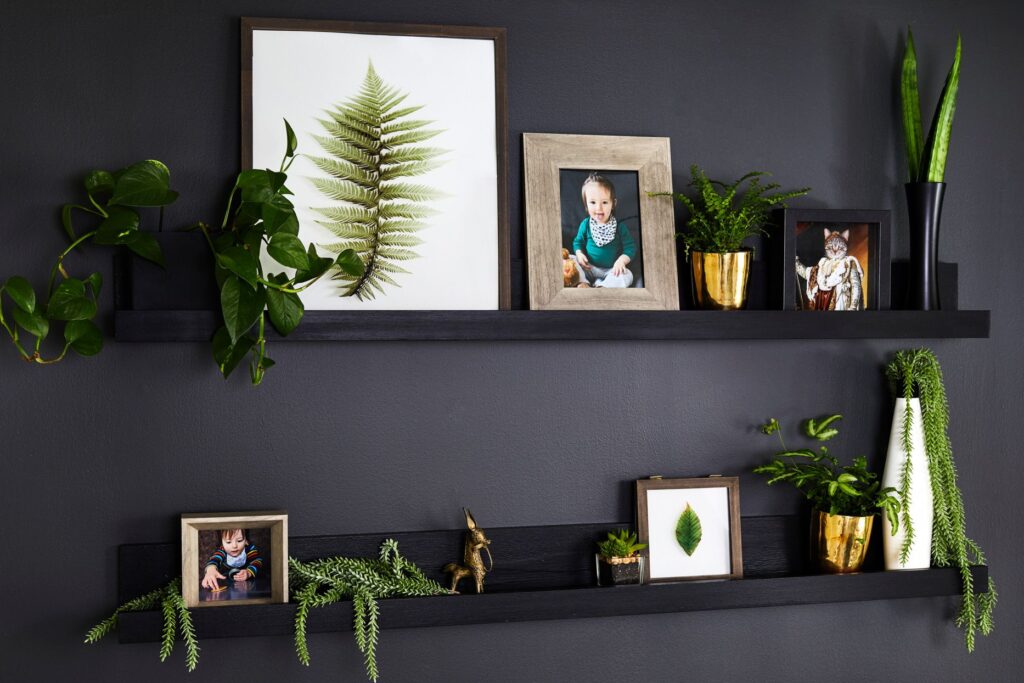Creating a cut flower garden is one of the most rewarding ways to bring color, fragrance, and joy into your daily life. Whether you’re clipping blooms for your kitchen table or making thoughtful bouquets for friends, a cut flower garden lets you enjoy fresh flowers all season long.
The beauty of a cut flower garden lies in its versatility. You don’t need acres of land or a formal layout. Even a small patch of soil, a few raised beds, or containers on a sunny balcony can yield an abundance of gorgeous blooms. With the right planning and a few design tips, your flower garden can become a source of endless floral inspiration.
As you begin your journey, it’s important to focus on flowers that are not only beautiful but also sturdy enough for cutting and long-lasting in a vase. Think dahlias, cosmos, zinnias, and snapdragons—these stars of the garden can handle the snip and keep blooming.
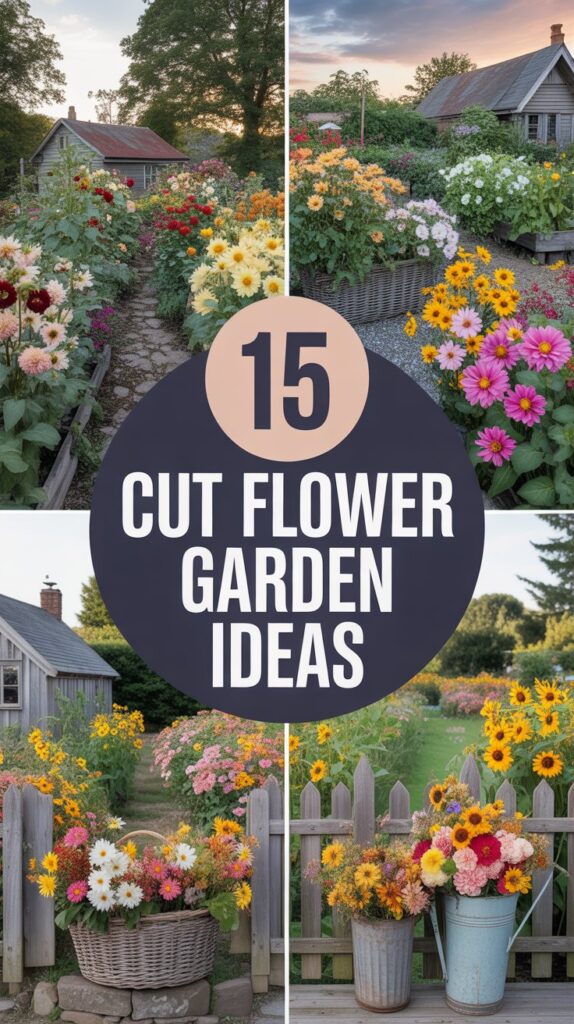
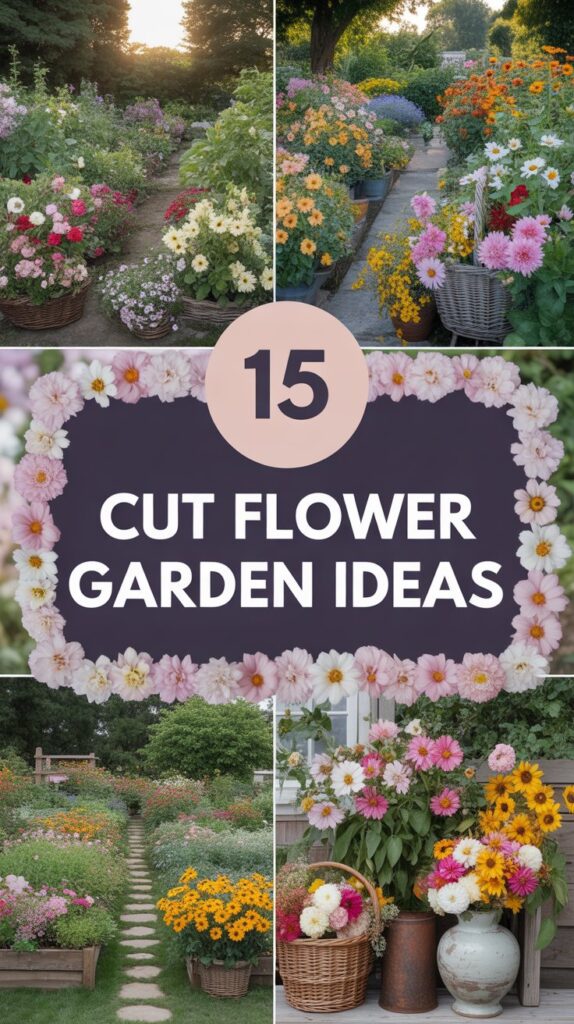
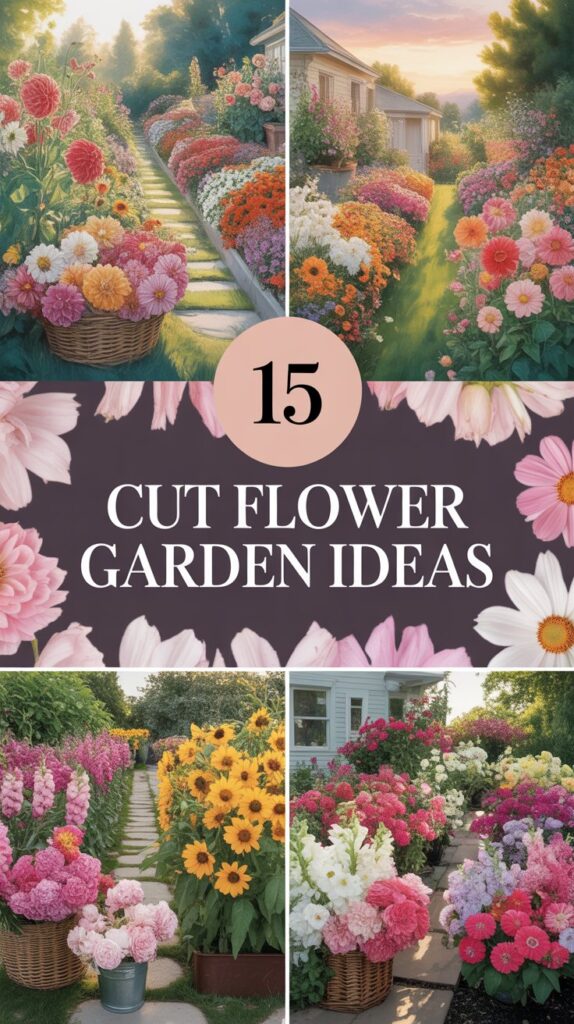
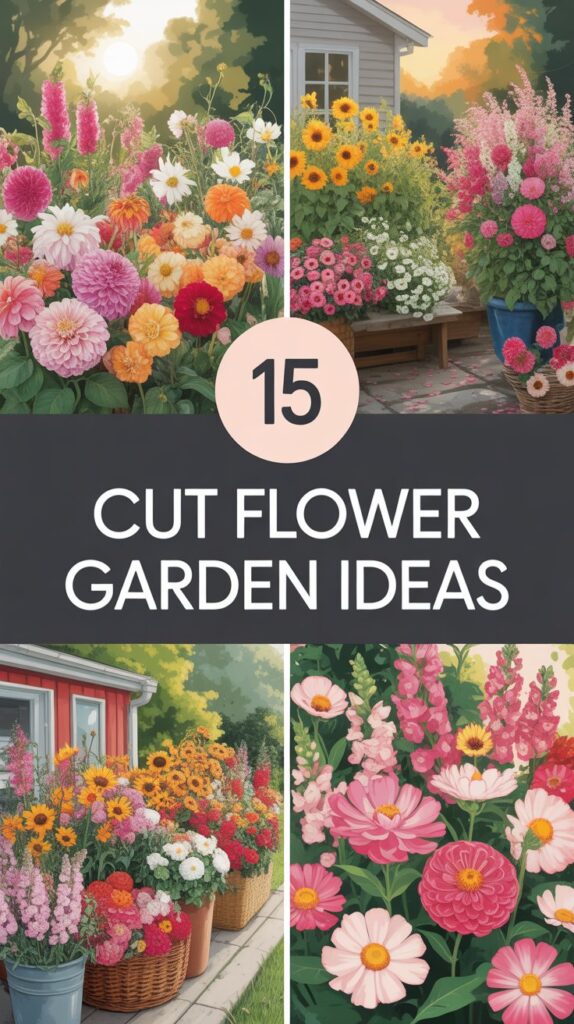
The layout of your garden is just as important as the flowers you grow. Consider grouping blooms by height and bloom time so you can create bouquets with texture, color, and interest. You’ll also want to include some fragrant fillers and foliage, such as eucalyptus, lemon basil, or dusty miller, to add depth and scent to your arrangements.
In this article, you’ll discover a collection of inspiring cut flower garden ideas that are not only practical but also designed to spark your creativity. Each idea is crafted to help you maximize your space, extend your bloom season, and create stunning, handpicked bouquets that elevate your everyday spaces.
Table of Contents
- Raised Bed Flower Garden
- Cottage-Style Cutting Garden
- Pollinator-Friendly Cutting Garden
- Monochrome Flower Palette
- Succession Planting Beds
- Edible & Floral Combo Garden
- Vertical Trellis Flower Garden
- Color-Themed Cutting Rows
- Backyard Flower Border
- Market-Style Flower Rows
- Seasonal Focal Beds
- Container Cut Flower Garden
- Wildflower Cutting Meadow
- Fragrant Flower Garden
- Moon Garden for Evening Blooms
- FAQs
- Conclusion
Raised Bed Flower Garden
A raised bed is an ideal solution for a dedicated cut flower space. It allows for better soil control, excellent drainage, and easier access for planting and harvesting. Choose a sunny location, and build beds at least 8–12 inches deep. Fill with rich compost and plant high-performing cutting flowers like zinnias, snapdragons, and cosmos. You can organize by height or color, giving your garden both function and style. Raised beds also help keep weeds out, making maintenance much simpler throughout the season.
Cottage-Style Cutting Garden
If you love the romantic charm of overflowing blooms and soft textures, a cottage-style cutting garden is perfect. This idea embraces a loose, natural planting style with layers of flowering varieties. Plant fragrant roses, foxgloves, sweet peas, and larkspur in an informal layout. Intermix herbs like lavender and mint for a lush look and added scent. Let the flowers grow close together to mimic the wild, abundant beauty of an English garden. The result? Bouquets that feel whimsical and effortlessly elegant.
Pollinator-Friendly Cutting Garden
Design your cut flower garden with pollinators in mind to support bees, butterflies, and hummingbirds. Incorporate flowers like echinacea, bee balm, rudbeckia, and yarrow. These varieties are not only stunning in bouquets but also provide food for essential pollinators. Plant in blocks for easy pollination and a fuller display of color. Add flowering herbs such as dill or oregano for extra texture. Your garden will be buzzing with life, and you’ll have a continuous source of vibrant, wildlife-friendly blooms.
Monochrome Flower Palette
For a dramatic and modern twist, try a monochrome flower garden. Choose one color family—like all white, shades of pink, or deep burgundy—and select a mix of flower types within that palette. White cosmos, peonies, and phlox create an ethereal look, while a burgundy palette with dahlias, scabiosa, and amaranth feels rich and moody. Monochrome designs are visually striking and make bouquet-building effortless. This idea is great if you love a cohesive, designer-inspired garden style.
Succession Planting Beds
To ensure a steady supply of blooms all season, use succession planting in your flower garden. Divide your space into sections and stagger plantings every 2–3 weeks. This method is especially effective for quick-growing flowers like zinnias, sunflowers, and cosmos. You’ll always have fresh blooms coming in, avoiding that late-season lull. Label each row to track your timing, and rotate varieties for bouquet diversity. This approach keeps your cutting garden productive and visually fresh for months.
Edible & Floral Combo Garden
Blend beauty and practicality by combining edible plants with cut flowers. Nestle marigolds, nasturtiums, and calendula among your veggies, or plant flowering herbs like basil and dill between rows of snapdragons and cosmos. Not only do these combinations attract pollinators, but they also maximize space in smaller gardens. You’ll have edible greens for the kitchen and fragrant flowers for your vases. The garden will feel alive with color, scent, and purpose—a true multi-sensory delight.
Vertical Trellis Flower Garden
If space is limited, go vertical with your cut flower garden. Use trellises, fences, or arches to grow climbing flowers like sweet peas, clematis, and climbing roses. These vertical elements add height and structure while freeing up ground space for lower growers like zinnias and gomphrena. A vertical garden makes harvesting easy, keeps blooms clean, and adds drama to your overall design. It’s especially striking when placed near an entrance or garden path for a wow-worthy first impression.
Color-Themed Cutting Rows
Design your cut flower garden by color rows to create bold visual blocks that also make bouquet-building easier. Dedicate one row to warm hues like oranges and reds—think marigolds, celosia, and dahlias. Another row can hold pastels, such as lisianthus, snapdragons, and sweet peas. Color rows help you quickly gather flowers for color-coordinated arrangements. They’re also visually satisfying to look at, making your garden feel like a living rainbow through the blooming season.
Backyard Flower Border
Turn the edge of your backyard or fence line into a blooming cut flower border. Choose a mix of perennials and annuals like black-eyed Susans, salvia, and cosmos to create a naturalistic edge. Taller varieties can go in the back, with shorter, bushy flowers like dianthus and asters near the front. This style works beautifully along walkways or around patios, making your outdoor space both practical and picturesque. You’ll have quick access to snip-worthy flowers just steps from your door.
Market-Style Flower Rows
Inspired by small flower farms, a market-style garden uses long, narrow rows filled with high-yield flowers grown for cutting. Use landscape fabric or mulch between rows to suppress weeds and simplify watering. This layout is ideal for growers who want to harvest consistently for bouquets or local sales. Stick with heavy producers like cosmos, zinnias, sunflowers, and celosia. This structured approach makes planning and maintenance easier and creates a visually tidy, farm-fresh aesthetic.
Seasonal Focal Beds
Divide your garden into sections that each shine during a specific season. Spring beds can feature tulips, daffodils, and ranunculus. Summer beds might include sunflowers, dahlias, and cosmos. Fall beds can highlight ornamental grasses, sedum, and asters. This method helps extend your bouquet season from early spring to late fall. It’s also perfect for showcasing the natural transition of colors and textures through the year, creating seasonal interest and endless photo-worthy moments.
Container Cut Flower Garden
Don’t have space for in-ground planting? Use large containers or grow bags to build your cut flower garden. This is a great option for patios, balconies, and decks. Choose compact or dwarf varieties like bush zinnias, miniature sunflowers, or dwarf cosmos. Mix in some filler foliage like dusty miller or scented geraniums for texture. Group containers together for impact, or scatter them around your outdoor space for a relaxed look. With proper care, containers can bloom just as abundantly as beds.
Wildflower Cutting Meadow
Create a natural, low-maintenance cutting garden by sowing a wildflower mix. Look for blends labeled for cutting that include cosmos, bachelor’s buttons, poppies, and calendula. Prepare your soil, scatter seeds, and let nature do the rest. The result is a loose, meadow-style garden buzzing with life. While it may not have the precision of a structured bed, it provides a rustic charm and endless variety. Every bouquet from a wildflower garden feels unique and playful.
Fragrant Flower Garden
Design your cut flower garden with scent as a primary focus. Choose highly fragrant flowers like sweet peas, garden roses, stock, and lavender. Add flowering herbs like lemon basil or mint for a fresh, earthy twist. A scent-driven garden makes your bouquets irresistible and adds a luxurious element to your space. Position fragrant varieties near seating areas or windows to enjoy their aroma indoors and out. This sensory-rich garden offers beauty for both the eyes and the nose.
Moon Garden for Evening Blooms
Create a magical atmosphere with a moon garden filled with white and pale-colored blooms that glow under soft evening light. Use flowers like white cosmos, nicotiana, night phlox, and moonflowers, which also release fragrance at night. Place your moon garden near a patio or outdoor seating space to enjoy sunset gatherings surrounded by gently glowing petals. Not only will you have stunning evening bouquets, but you’ll also extend your enjoyment of the garden into the twilight hours.
FAQs
What are the best flowers to grow for cutting?
Popular choices include zinnias, dahlias, cosmos, snapdragons, sunflowers, and sweet peas. These flowers are long-lasting in vases and bloom prolifically through the season.
How much sunlight does a cut flower garden need?
Most cut flowers need at least 6–8 hours of direct sunlight per day. Choose a bright, open space to ensure strong growth and healthy blooms.
Can I grow a cut flower garden in containers?
Yes, many cut flowers thrive in containers. Opt for compact varieties and use large pots or grow bags with proper drainage and rich soil.
How do I keep my cut flowers blooming all season?
Use succession planting and deadhead spent blooms regularly. Fertilize every few weeks and water deeply to encourage continuous flowering.
Do I need special tools for cutting flowers?
A pair of sharp garden snips or floral shears is ideal. Cut stems early in the morning and place them in water immediately for longer vase life.
Conclusion
Starting a cut flower garden is a beautiful way to bring joy, creativity, and nature into your daily routine. Whether you’re working with a sprawling backyard or a few containers on a balcony, there’s a style and layout to suit your space. From vertical trellises to fragrant evening gardens, each idea in this list offers a chance to express your unique floral style.
The best part about growing your own cut flowers is the sense of satisfaction that comes from clipping a fresh bouquet that you nurtured from seed to bloom. You’ll not only save money on store-bought flowers but also have the freedom to experiment with colors, textures, and arrangements all season long.
Let your garden evolve with your creativity. Try out new combinations, mix in herbs and foliage, and embrace the joy of sharing your blooms with loved ones. No matter which idea you choose, your cut flower garden will become a space of inspiration, beauty, and connection to the earth—one stem at a time.

